ISSN ONLINE(2319-8753)PRINT(2347-6710)
ISSN ONLINE(2319-8753)PRINT(2347-6710)
| Sujitkumarsingh, Sumankumar, SitaramGiri Student, Dept. of Electrical & Electronics Engineering, Dr. MGR Educational & Research Institute University, Chennai, India |
| Related article at Pubmed, Scholar Google |
Visit for more related articles at International Journal of Innovative Research in Science, Engineering and Technology
Voltage is an important parameter for the control of electrical power systems. The Distribution Network Operators (DNO) have the responsibility to regulate the voltage supplied to consumer within statutory limits. Traditionally, the On-Load Tap Changer (OLTC) transformer equipped with automatic voltage control (AVC) relays is the most popular and effective voltage control device. STATCOM, power factor generator are alsothe useful technique to control the voltage in distribution system. Connecting Distributed Generation (DG) to the network inherently affects the feeder voltage profiles and influences the voltage control in distribution systems. In recent years, the number of DGs connected to the distribution networks is continuing to grow. Their impact on the network is therefore demanding proper attention and is affecting the design of new voltage technique scheme. The potential for using Smart Grids also promises to have a major influence on schemes for voltage control in the power systems. This paper presents an overview of existing voltage control schemes which are used to control the voltage in distribution networks. It includes a discussion of new techniques which have been introduced and those being proposed to improve voltage control for networks containing various levels of DG. It also examines the potential opportunities for OLTC voltage control schemes offered by the use of Smart Grids
Keywords |
| distribution generation, OLTC, STATCOM, AVR relay, PFC, distribution system, voltage control |
INTRODUCTION |
| vNow a days the electrical power transmission and distribution system normally operated at multiple voltage level. Voltage is one of the most important parameter for the control of power system when connected to DG. The connection of DG in distribution system has created a challenge for distribution network operator to change their usual passive approach to an active system. The conventional distribution networks are designed based on the assumption of unidirectional power flow with the increasing connection DG. The network has become more dynamic with bidirectional power flow. It is known as active distribution network. |
| An active distribution network is defined as distribution network with system in place to control a combination of distributed energy resource comprising of generator and storage. |
| Voltage controls in active distribution system have been decomposing into three hierarchical level i.e. primary, secondary and tertiary levels. The primary control is performed by AVR (Automatic Voltage Regulator), the secondary control is performed by on load tap changer (OLTCs) meanwhile tertiary control is a short operation planning is developed to coordinate the action of primary &secondary control device according to secured operation and economic criteria based on load and generation forecast. On the other hand voltage control in distribution system is normally achieved by in cooperating on load tap changer (OLTCs) and switched shunt capacitor only in most distribution system . |
| The voltage and reactive power equipment in distribution system are mostly operated based on and assumption that the voltage decreases along the feeder on the other connection of distribution generation will fundamentally alters the feeder voltage profile which will obviously effect the voltage control in distribution system . The modernization of electricity distribution system now a day coordinated voltage control developed into distribution system. Different method of short term operation planning for distribution system voltage control have been proposed .This paper present a review of different voltage control method in distribution system in the presence of DG.the distribution networks become more complex and the number of distributed generation (DG) is continuing to grow, conventional OLTC voltage control schemes are going to be less effective. Whenever there is reverse power flow caused by the integration of distributed generation, there are complications for the operation of the AVC. Meanwhile, the potential use of Smart Grids also indicates to have a significant influence on schemes for voltage control in the power systems. To deal with the voltage control problemstogether with the increasing penetration of the DGs as well as the use of Smart Grid, DNOs need more stable and effective OLTC voltage control schemes and also the other voltage schemes. |
VOTAGE CONTROL IN ELECTRICAL DISTRIBUTION SYSTEM |
| The voltage variation ΔV across the line can be represented by the following equation |
 |
| Where ΔV indicates voltage variation P and Q represents active and reactive power output of DG, X and Rare reactance and resistance of line connecting to DG. V is the nominal voltage at the terminal of DG. |
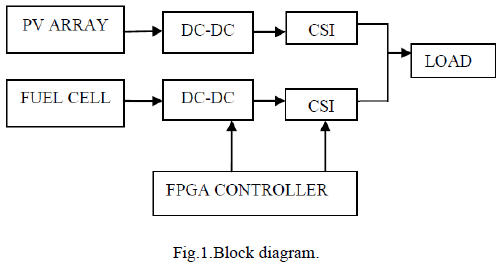 |
| A simple radial feeder is connected with DG is shown on figure. On Load Tap Changer transformer load a reactive power compensator , automatic voltage controller , line drop compensator , energy storage device is also connected on the system . Generally the X/R ratio of distribution system is relatively low than that of transmission line.According to equation 1 , power generated by DG will result in voltage rise or drop on the distribution network , feeder with high impedance . The voltage variation would also depend on several factor including DG size , location and method of voltage regulation |
| 2.1 GENRATOR POWER FACTOR CONTROL |
| The uses of AVC relay with DGs synchronous generator are implemented to adjust their reactive power output of bus bar voltage. This operation could result in several severe problem including high current and over current protection and disconnecting the generator from the network. For ensuring network safety DGs are not allowed to use AVC to adjust their voltage. So power factor control has been implemented with DG. |
| In power factor control P/Q is maintained constant. According to equation , P is directly proportional to voltage variation. If Q can be compensated for voltage variation generated by P by adjusting in opposite direction. So voltage variation can be maintained within the limit. For voltage increment situation the more leading power factor at where the DG isconnected.Wallace and Kiprakis (2002) proposed a voltage control method for DG which assumed a more flexible directive from DNOs in terms of voltage control by DG. The voltage control technique is able to keep DG online during light heavy load condition by combining AVC and PFC. This technique was also able to improve steady state and slow transient profile. |
| 2.2STATIC SYNCHRONOUS COMPENSATOR |
| A STATCOM is a flexible AC transmission system (FACTS) device it is a voltage source converter based device which a DC input voltage into an AC output voltage in order to compensate the reactive power ofthe system . usually the reactive power output of a STATCOM is regulated to maintain the minimum AC voltage at the bus to which STATCOM is connected .it can provide control in both transmission as well as distribution system with a fast response control. Due to the fast response of STATCOM modern control strategy such as linear quadratic regulator (LQR) can be provided for voltage control. Rao et al.(2003) implemented PI ,pole –placement and LQR controller on the STATCOM respectively .the performance were compared in terms of response profile and control effort. |
ON-LOAD TAP CHANGER |
| There are various control characteristics associated with OLTC such as Line Drop Compensation (LDC), time grading for accommodating operation in series of transformers, as well as a variety of circulating current compensation techniques for operation of parallel transformers |
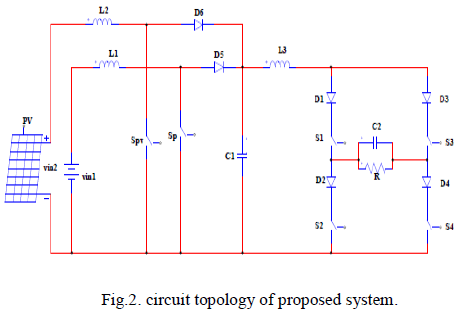 |
| LDC monitors the voltage at the secondary side of the transformer and then using a measure of the secondary current to simulate the voltage drop across the feeder that exists between the transformer and the load . This voltage drop along the feeder impedance is used to boost the voltage regulated at the transformer terminal therefore ensuring thecorrect voltage level maintains at the load where it is required. The LDC provides voltage control at a nominal load point rather than at transformer terminals as shown in Figure |
| OPERATION IN SERIES |
| There are multiple voltage levels used for generation, transmission and distribution in most power supply networks. In each area, On-Load Tap Changer transformer will be used between these different voltage levels as shown in Figure. |
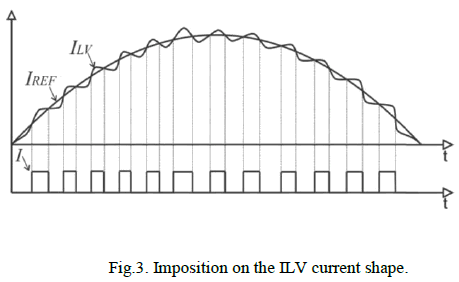 |
| Due to the uncoordinated control schemes between the upstream and down-stream controller, the OLTC transformer can become unstable. The grading time (GT) is introduced as an additional delay to ensure the upstream transformer has finished its operation before the down-stream transformer restores the voltage level [3]. The GT is set as the worst case voltage correction time. |
| Communications assisted voltage control schemes |
| A communications unit can be used to replace the need forGT delay. When the up-stream transformer starts the operation, a blocking signal is issued to stop the operation of down-stream transformer. The blocking signal is removed when the up-stream transformer has done its correction .Hence, the time delay is reduced from worst case correction time to up-stream operation time. |
| OPERATION IN PARALLEL |
| With the growing customer demand for the higher security and reliability of supply, it is common practice for the DNOs to parallel transformers on one site or across the network in order to meet the engineering recommendation as shown in Figure. In this situation, the main aim of the AVC scheme is to maintain the voltage within statutory limits, at the same time, to minimise circulating current between parallel transformers. There are some factors might affect the AVC schemes such as power factor, DG integration or varying load. The Standard voltage control schemes for paralleled transformers are as follows |
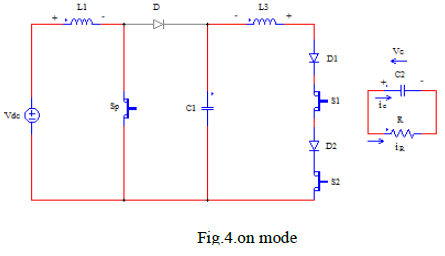 |
| Master-Follower |
| A simple and extensively used AVC scheme is the master follower scheme. One OLTC transformer is designed as the “Master” and all other OLTC transformers in parallel with it as “Followers”. In this scheme the master transformer monitors the required voltage and alters the tap position to regulate the voltage to desirable level. The other OLTC transformers replicate the same actions to make all paralleled transformers kept on the same tap position. The masterfollower scheme can be used with LDC and operates under varying power factor, reverse power flow and DG integration. |
| The disadvantage of this scheme is that the circulating current will flow between transformers if the paralleled transformers are not the same type. Additionally, the parallel transformers must be on the same site. It is impossible to use this scheme across a network due to the connection between the AVC relays. |
| True Circulating Current |
| The True Circulating Current scheme is considered to use essentially identical transformers as the master-follower scheme. This scheme regulates the voltage as well as reduces circulating current between paralleled transformers. The different tap positions of the transformers will result in a circulating current. This current is calculated by the interconnection between controllers to create a voltage bias. The biasing in opposite polarities is used to correct the OLTC to adjust the relay setting voltage therefore the circulating current is minimised. It can also work with LDC and operates under varying power factor, reverse power flow and DG integration. The backward is that it is difficult to parallel transformers which are not in the same site. |
| Negative Reactance Compounding |
| The negative reactance compounding (NRC) method is one of the common AVC schemes used in the distribution networks. The negative value of reactance with LDC settingsis used to make the tap positions of paralleled OLTCtransformers to be similar. The following formulas show the relationship between LDC settings and negative reactance compounding (NRC) setting: |
 |
| illustrates the NRC principle. The tap position of transformer T1 is much higher than of transformer T2 in this situation. A circulating current occurs and flows between the two paralleled transformers. The individual transformer current IT1 is shifted clockwise and current IT2 anti-clockwise by the circulating current. A voltage drop IT·ZNRC is created to modify the target voltage from VVT to VAVC and used by AVC relay to correct the tap position. The effective measured voltage VAVC1 is seen by AVC relay of T1 higher than the target voltage VVT and as a result the tap change is down. A similar action is done by AVC of T2 but the tap change is up. When the circulating current is eliminated and target voltage is achieved, the action stops with a similar tap position of both the parallel transformers. |
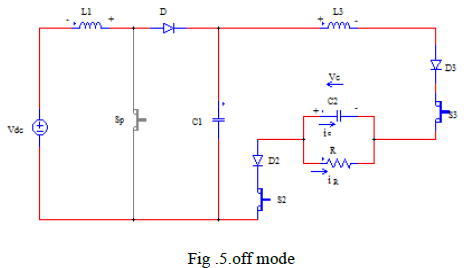 |
| The paralleling transformers with the negative reactance compounding scheme can operate with transformers at different positions in the networks and it is unnecessary to be identical anymore due to the independently action of each transformers. However, the NRC scheme is not accurate without unity power factor thus is susceptible to the varyingpower factor. The voltage error is increased due to the power factor deviation . The performance of LDC is reduced due to the negative value of XLDC setting and an increased value of RLDC is necessary to keep the same boost. |
| Transformer Automatic Paralleling Package |
| The Transformer Automatic Paralleling Package (TAPP) scheme, based on the NRC scheme, reduces the circulating current between the paralleled transformers by dividing the measured current into load transformer current and circulating current. TAPP scheme uses techniques based on the target power factor, to evaluate circulating current by comparing the measured transformer load current (ITR) with the target power factor (pftarg) as shown in Figure. Two separate circuits, one for LDC and one for compounding, are introduced into |
| TAPP scheme to eliminate the LDC degradation with NRC. However, the disadvantage of TAPP scheme is that the load power factor deviation will result in an error in the controlled voltage due to knowledge of the load current being considered as circulating current. The specified power factor is the necessary factor to make the voltage control to be satisfactory. |
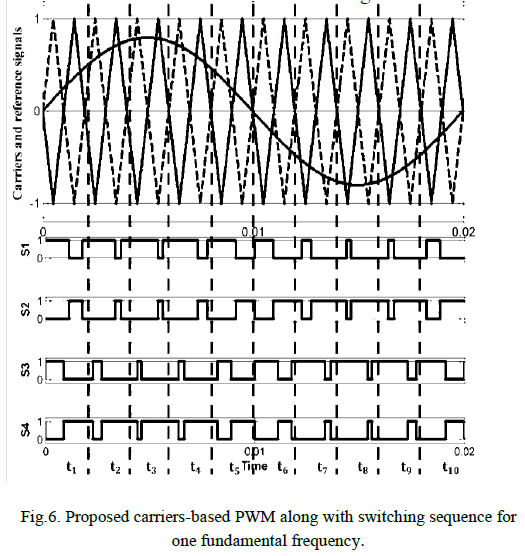 |
INFLUENCE OF THE DGS INTEGRATION |
| Due to a variety of reasons, more and more distributed resources are connected to provide local power supplies to solve the constraints of the transmission or distribution networks, reduce the transportation cost from power supply stations to consumers and to exploit renewable energy. Therefore, the capacity of Distributed Generation (DG) connected to distribution networks has grown and is continuing to grow. The presence of DG considerably influences the voltage regulation of distribution network. This situation demands much more attention to improve voltage control techniques to accommodate the increasing number of DGs in distribution networks as shown in Figure. |
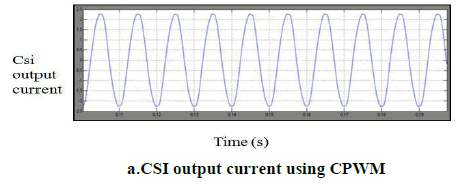 |
| The voltage drop across the feeder is compensated by the compounding setting with traditional AVC relay schemes. However, the presence of DGs including wind turbines connected to distribution networks affects the AVC relay performance and results in voltage regulation problems due to the interference. The DG integration changes the power flow and sometimes results in reverse power flow as well as a voltage increase occur at the point of connection. Thus the feeder currents measured by traditional AVC relay are no longer proportional to load currents. The measured voltage is shifted upwards or downwards depending on the power factor of transformer current and direction of power flow to the DG and load. Improved voltage control schemes are the topic of ongoing research to accommodate the presence of the DGs connected to distribution networks. |
FUTURE DEVELOPMENT OF VOLTAGE CONTROL WITH SMART GIRD |
| With the growing power demand and increasing use of renewable energy, the traditional power grid is improved to Smart Grid in the future. |
Concept of Smart Grid |
| The Smart Grid uses intelligent devices and a digital communication upgraded power system to enhance the performance of transmission and distribution grids. This can assess its health in real-time, accommodate new environments, control distributed resource integrations and optimise the response of smart appliances of end users. The efficiency and reliability can be improved and active roles from end users are involved in Smart Grid in order to save consumers’ money. The basic concept of Smart Grid is to have monitoring capability with data integration, advanced analysis to support system control, enhanced power security and effective communication to meet the power demand as well as reduce the energy consumption and costs. It should also facilitate a generator led control rather than one centred on demand. |
| Influence of the Smart Grid |
| Smart Grids are more consumer-interactive in order to make the grid truly intelligent. There are many challenges and problems need to be addressed with the use of Smart Grids. The renewable energy resources are used more and more such as wind, solar and hydrogen to result in the consumer integration inevitable to aid the grid performance. Therefore, a high degree of DG penetration will occur due to the high efficiency and low environmental impact of these preferred DG sources. The presence of high level DGs integration has considerable impact on voltage regulation of the existing OLTC voltage control system due to their complex nonlinear characteristics. Since the end users are expected to play a more dynamic role to develop voltage control in Smart Grid,the short-term voltage control is required. This is considered not to be adequately supported by the existing OLTC control systems. |
| Opportunity for new OLTC voltage control scheme |
| The voltage control method may well be changed in the future as the control needs to be more flexible and smarter. The solid state devices using power electronics provide new opportunities to operate coordination control with OLTC to control the voltage in Smart Grid. |
| The Static Synchronous Compensator (STATCOM) is a Flexible AC Transmission Systems (FACTS) device. STATCOM provides reactive compensation to control power flow for power systems. Since the dynamic voltage control isneeded in Smart Grid, STATCOM can be used due to the fast response time in distribution networks. |
| The energy storage is always come with the renewable energy sources, thus the STATCOM can operated in all four power quadrants to accommodate the situation. When bothSTATCOM and OLTC are used to control system voltage,the coordination controller is introduced. The use ofSTATCOM is helpful for the control scheme to couple withpower grid with widespread use of digital communication. The proposed arrangement of the new control scheme is as follows as shown in Figure |
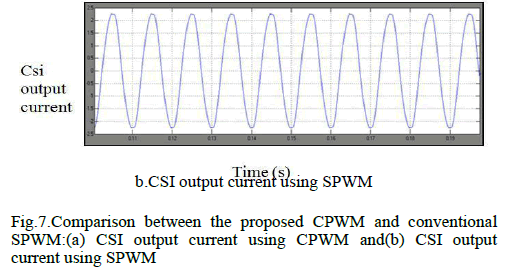 |
| The new control scheme for voltage regulation, centredaround the control of OLTC transformers, is aimed at meeting both the demands of the existing power system and future developments of Smart Grid. |
CONCLUSION |
| This paper has shown the review of the existing voltage control of different control technique which are used to regulate the voltage level (i.e.)on-load tap changer transformer with their featuresare operated in series and in parallel. Distributed generation integration impacts on the OLTC control scheme. The discussion of new techniques of the Enhanced Automatic Paralleling Package and SuperTAPP n+ relay schemes have been introduced. These schemes are proposed to improve voltage control for networks containing various levels of DG.STATCOM give the harmonics free voltage control in distribution system. The influence due to the concept of Smart Grid has many potential opportunities for the OLTC control schemes. Naturally, these schemes build on the previous techniques that are used for OLTC control and will have a significant influence on the development of voltage regulation in distribution networks. The STATCOM is a possible device to operate coordinately with OLTC to meet the requirement offered by use of Smart Grids. |
References |
|